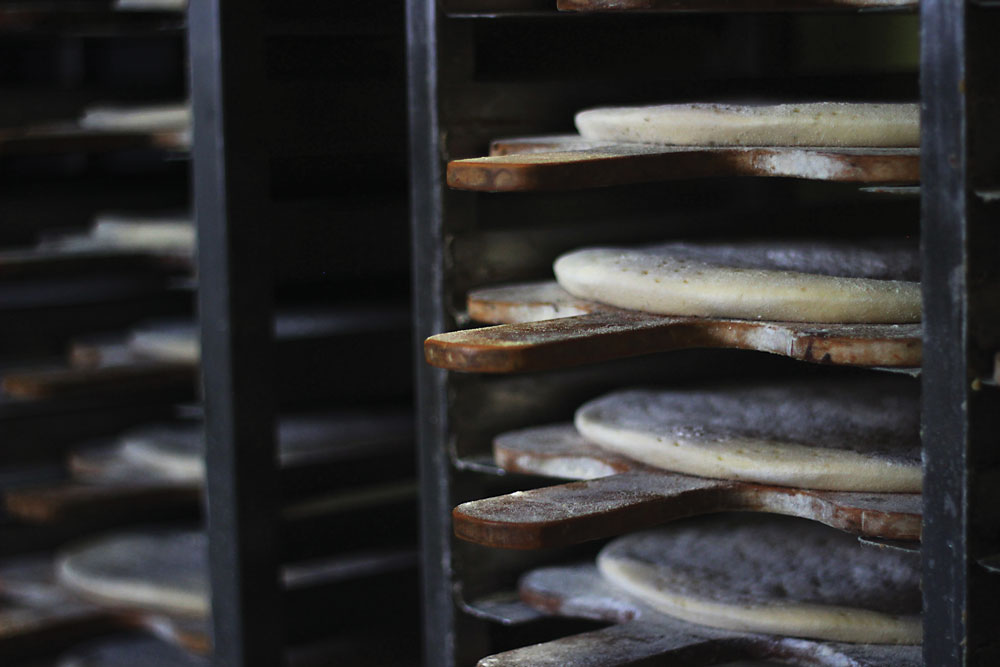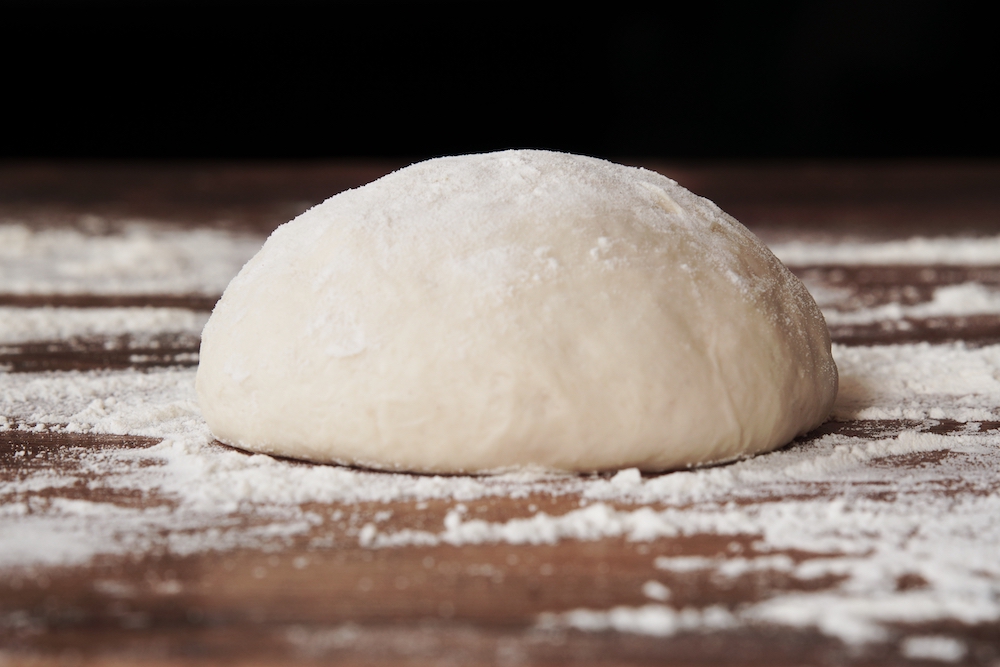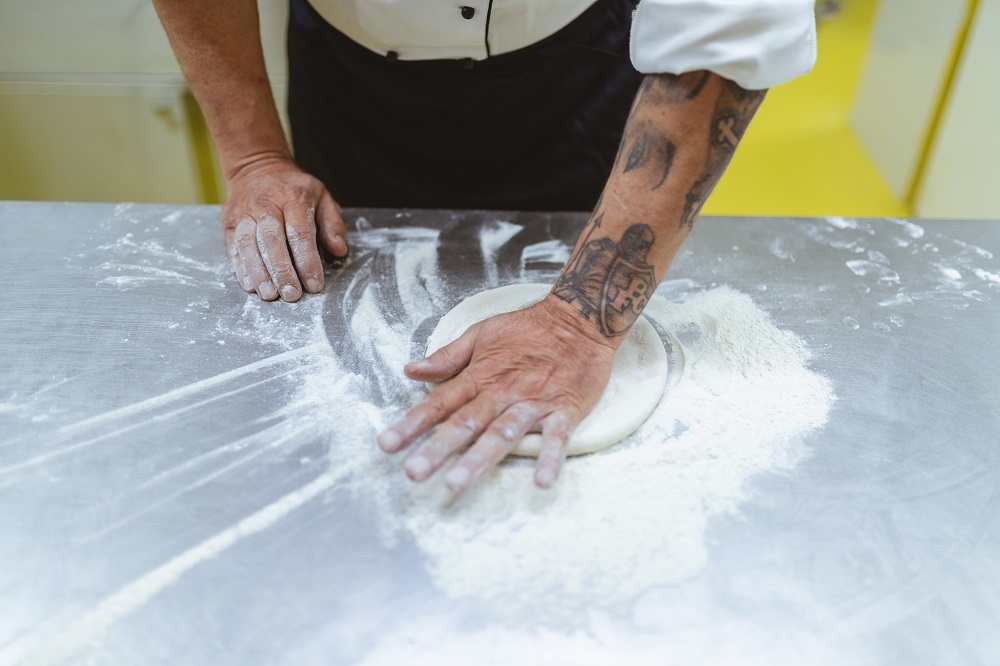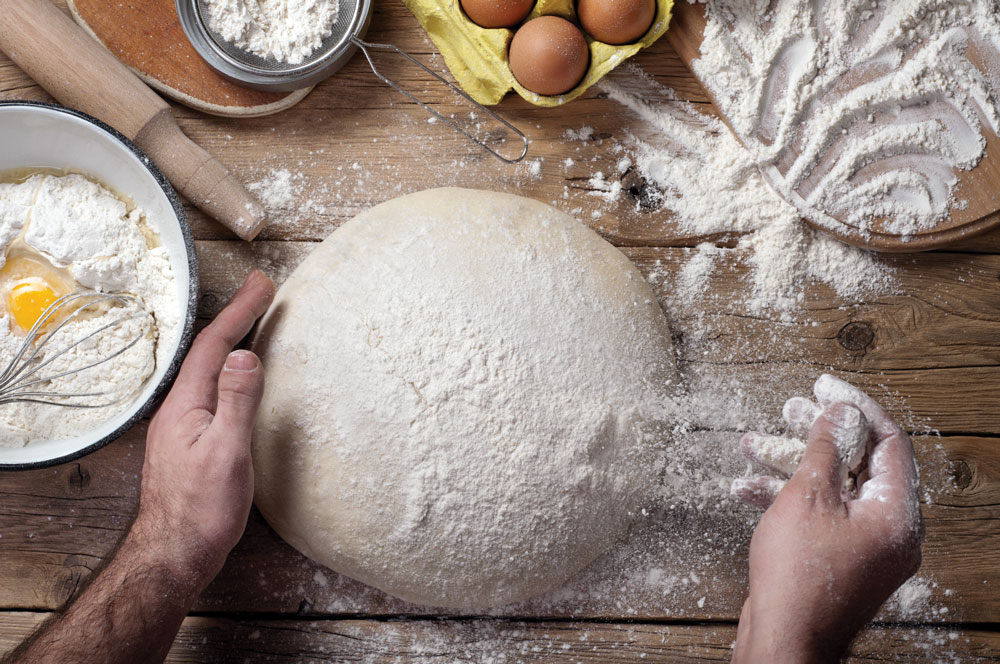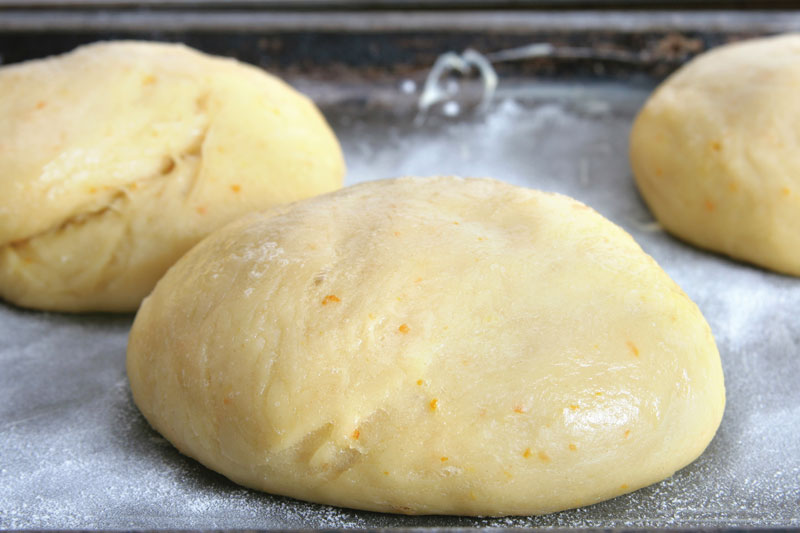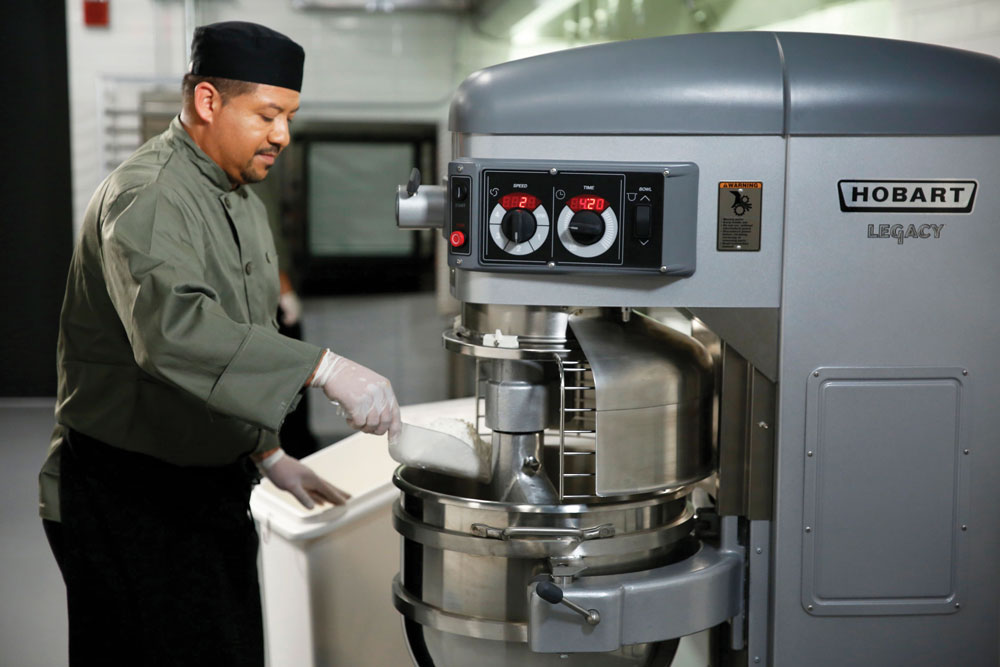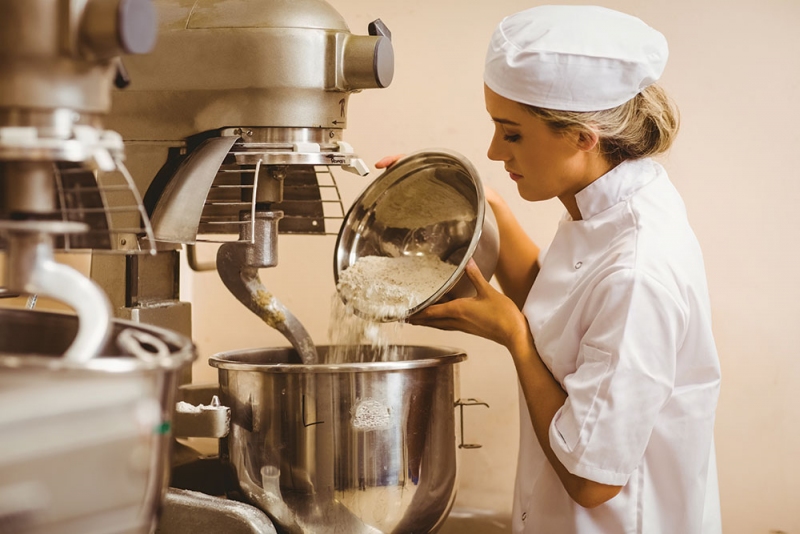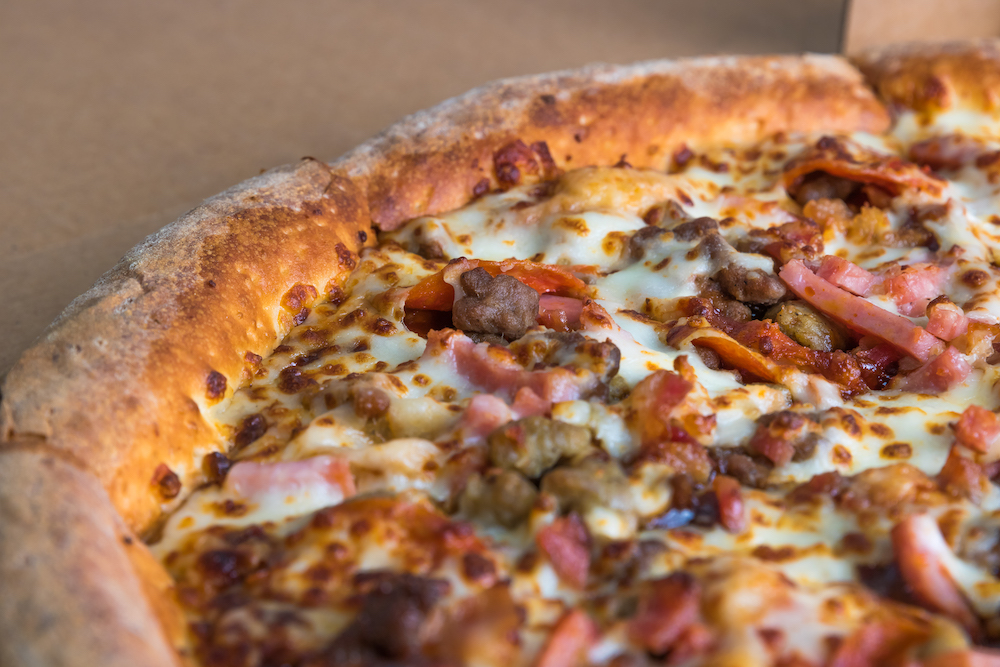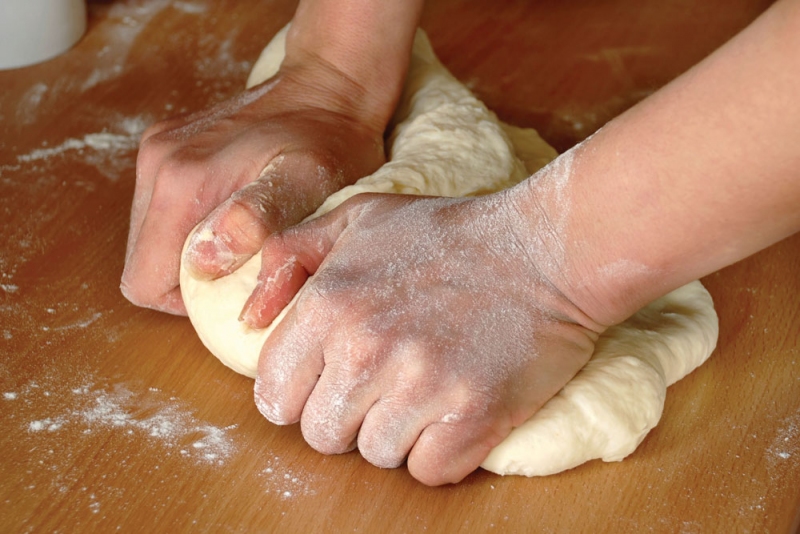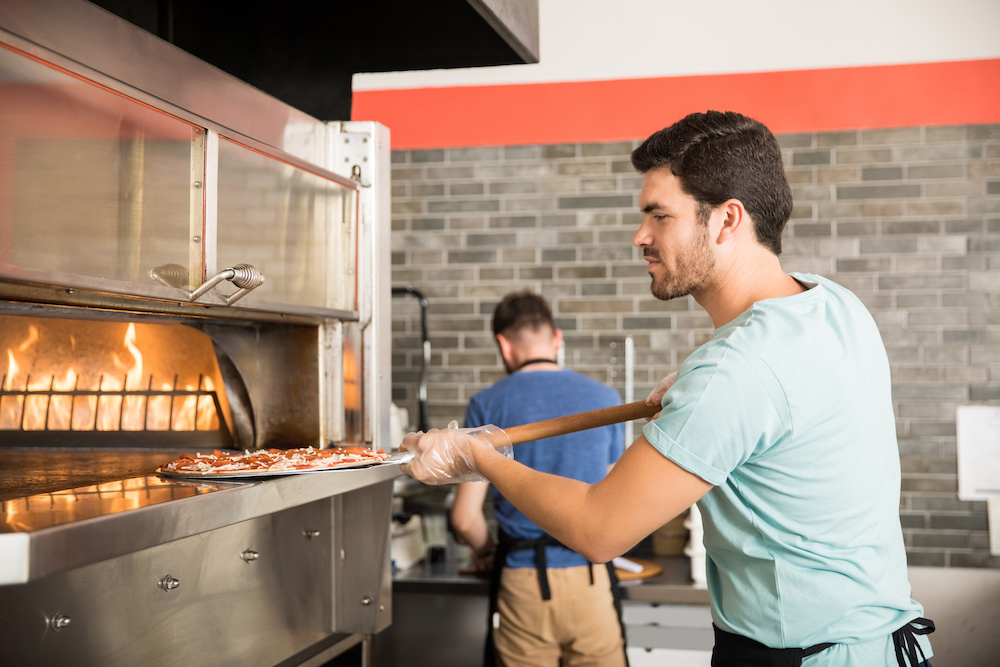Question:
How do I calculate the cost of my dough?
Answer:
Many of us have spread sheets that will automatically calculate our dough cost for us, but many of the small operators don't have that nifty tool available to work with, so they must revert to the old, tried and true method of long hand dough cost calculations.
Here is how I've always done it. Set-up the table below on a clean sheet of paper and run off some copies:
Now, if you want to figure out what it costs to make your dough, including such things as labor, overhead, etc. use the rule of 2.5 times the unit dough cost to get a realistic picture of what it is actually costing you to make the dough, in this case it would be 2.5 X 7.8 cents = $0.195 (19.5 cents) per dough piece.
In working with this table it is important to remember to show the ingredient amounts in pounds as a decimal. To do this, divide the ingredient weight in ounces by 16. If an ingredient amount is say, 3 pounds and 7 ounces, the decimal amount will be 3.438 pounds (rounded from 3.4375 pounds).
The ingredient unit cost is the ingredient cost per pound. If, for example, you purchase a 50-pound bag of sugar for $19 (delivered to your door), the unit cost will be $0.38 (38 cents) per pound.
For the water cost, take your average water bill and see how much water you're using. It may be reported either in cubic feet (62.43 pounds of water per cubic foot, or in gallons (7.963 pounds per gallon). Not all of that water is being used in making your dough, but since a good part of it is either going into the dough or used in cleaning dough related equipment, pots and pans/dinnerware the dough is an appropriate place to charge it against. Hey, somebody has to pay for it.
You can follow the same outline for calculating the cost of your sauce or anything else with multiple ingredients.
This is the way we used to do it way back when – well lets just say before the day of the hand held calculator or computer with all of its labor saving programs.
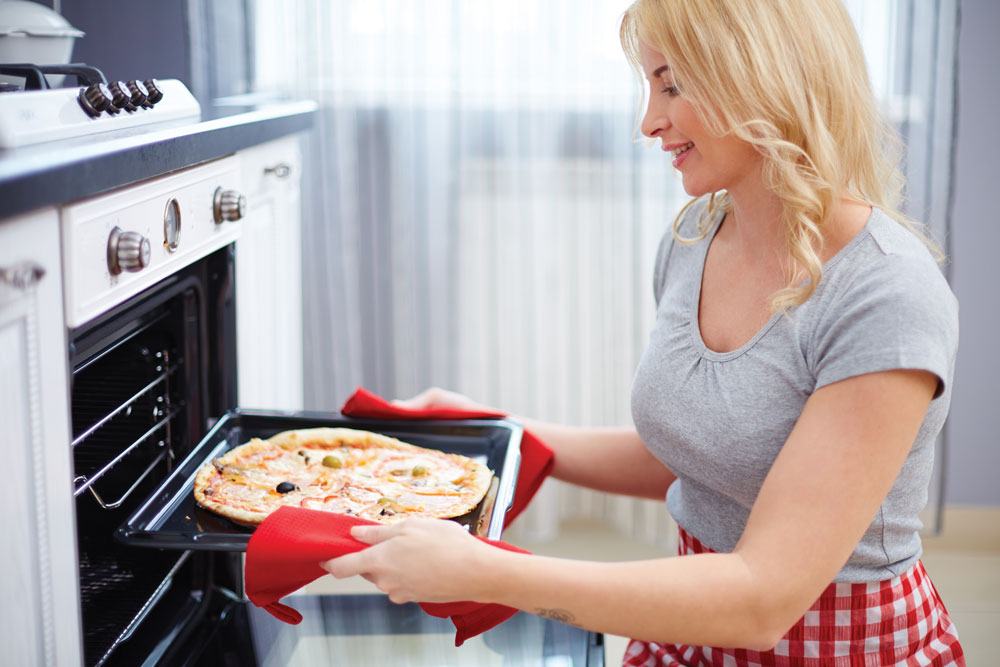
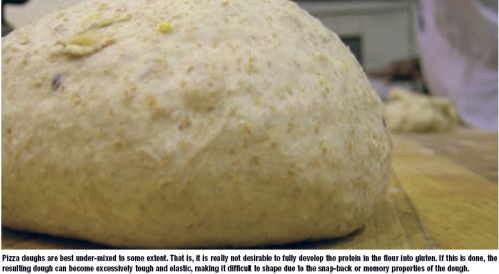
Question:
I'm trying to make a special Chicago-style pizza crust and I'm having a problem getting the crust the right color. I've added eggs and corn flour, but I still can't get the yellow, almost orange color I'm looking for.
Answer:
The color you are looking for is not the result of eggs or corn flour, but rather the result of adding egg-shade (AKA egg coloring) to the dough.
Question:
I'm new to the pizza business and I'm now looking at vertical and spiral type mixers. There are so many to choose from. With all the different speeds these mixers have, what is the correct speed to mix the dough on?
Answer:
First let's discuss a little bit about the mixing of a pizza dough. Pizza doughs are best under-mixed to some extent. That is, it is really not desirable to fully develop the protein in the flour into gluten. If this is done, the resulting dough can become excessively tough and elastic, making it difficult to shape due to the snap-back or memory properties of the dough. Typically, pizza dough is mixed just to the point of developing a smooth dough appearance. There will be a significant amount of further gluten development in the dough, but this will come about as a result of bio-chemical gluten development, during the fermentation period of the dough (several hours at room temperature or 18 to 72 hours in the cooler). When the gluten is developed in this manner, the dough has a very relaxed feel and is easy to form without excessive snap-back or memory.
To achieve the proper mixing of the dough, we have found that, using a 2-speed, vertical mixer, it is best to use low (1st.) speed to blend the ingredients together, then switch to 2nd speed for the rest of the mixing. When using a 3-speed mixer, the mixing sequence might be a little different. Use low speed to blend the ingredients together. This helps to prevent ingredients from becoming air-borne when you change up to the next higher speed. Continue mixing at low speed until the dough just begins to take on a smooth, satiny appearance. Now, change to 2nd speed to mix the dough for a minute or so to finish it. With a 4-speed mixer, you should again use 1st speed to blend the ingredients together, then go to 2nd speed for the bulk of the dough mixing. I don't ever remember using 3rd or 4th speed on a 3 or 4-speed mixer to develop a dough. If you do, you will probably be rudely reminded by the mixer that this is not something that it likes to do. First, it will stall, or slow down in speed, then if you still haven't gotten the clue, it will begin to overheat and trip out the thermal overload switch in the motor. Once this happens, grab yourself a cup of coffee and take a break, it will be several minutes before the motor cools down and the overloads are automatically reset. Until then, you're without a mixer. If you insist on this course of mixer abuse, you will soon notice that your mixer's thermal overloads are tripping out sooner, and more frequently. Hello, Mr. Mixer Repair Man, I've got this problem with my mixer.
Keep in mind that these are only guidelines for mixing a pizza dough, the exact make and model of mixer that you have, the age of it, its overall mechanical condition, and the formulation of your dough will dictate the best speeds to mix your dough. Remember to always begin mixing at low speed to blend and wet the ingredients as this will reduce/prevent splashing of ingredients, then go to the next higher speed only if your mixer will handle the load without overheating or stalling, and mix the dough just until it takes on a smooth, satiny appearance, any more mixing than that will only make life more difficult for both you and your mixer.
Got more dough questions? Be sure to check out The Dough Doctor's New York Pizza Show Dough Seminar.



